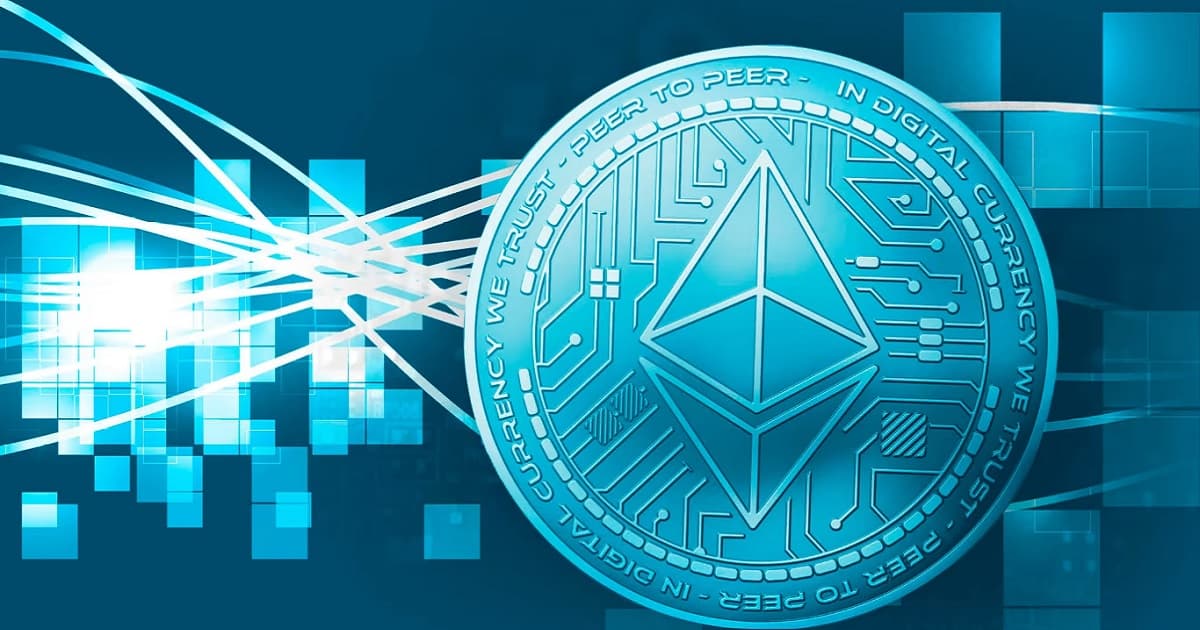Ethereum powers DeFi and RWA tokenization, driving significant growth and innovation in 2025, and solidifying its place as a leader in blockchain technology. Ethereum ($ETH), the backbone of the blockchain ecosystem, is one of the most innovative and adaptable cryptocurrencies. It has grown to fit the demands of a dynamic market, from smart contracts to decentralized finance (DeFi). Juan Leon, a Bitwise expert, calls Ethereum “The Comeback Kid of 2025.” His comment shows the platform’s exceptional adaptability and success in a fast-changing financial and technical world. Leon bases his claim on Ethereum’s technology advances, institutional interest, and superiority in tokenizing real-world assets. These factors are redefining Ethereum and strengthening its leadership in the blockchain revolution.
Ethereum 2.0 Revamp
Ethereum’s revival is due to its successful upgrade to Ethereum 2.0, which improved scalability, security, and sustainability. Ethereum’s energy consumption has dropped by almost 99% since switching from PoW to PoS. Its eco-friendly approach supports global sustainability goals, making it more enticing to green investors and institutions. Ethereum 2.0’s scalability enhancements allow for greater transaction volumes. This is crucial as institutional usage expands and more companies use Ethereum’s blockchain for real-world applications. These upgrades provide the network a solid basis for complex financial systems and sustain its growing user base. Juan Leon highlights that Ethereum’s 2025 rebirth depends on its infrastructure adaptability to market needs. Ethereum has created new industry norms and overcome old constraints, enabling unprecedented development.
Institutional Shift to Ethereum
Institutional investors have transformed Ethereum. Institutions use blockchain technology to improve their operations and become active crypto players. Ethereum’s rich ecosystem, powered by smart contracts and dApps, offers unmatched tokenization, decentralized banking, and digital identification solutions. Ethereum tokenizing existing financial assets drives institutional interest.

Tokenization turns real estate, equities, and bonds into blockchain-tradable digital tokens. Programmability and security make Ethereum the platform of choice for these endeavors. Thus, Ethereum, the native cryptocurrency, is in demand as institutions power their tokenized ecosystems with it. Juan Leon says Ethereum’s attraction goes beyond its technology; it bridges traditional banking with blockchain innovation. Ethereum is essential to modernizing institutions because it provides a safe and transparent financial transaction platform.
Ethereum Leads RWA Tokenization
Ethereum’s RWA leadership is another reason for its revival. Real estate, commodities, and fine art RWAs are tokenized to improve asset management liquidity, transparency, and efficiency. Ethereum has transformed asset management and trading by seamlessly representing tangible assets digitally. Smart contracts are important to this change. They automate complicated procedures, eliminating intermediaries and lowering transaction costs. Ethereum is preferred by organizations considering RWA projects because of its efficiency. Bitwise strategist Juan Leon says RWA growth has created a good feedback cycle for Ethereum. Additional tokenization initiatives use Ethereum, strengthening its network effect and attracting additional developers, users, and investors. This trend should increase utility token demand for ETH, enhancing its value.
Ethereum Powers DeFi
Ethereum is crucial to decentralized finance (DeFi). Ethereum-based DeFi applications have democratized financial services by providing decentralized lending, borrowing, and trading platforms globally. Ethereum smart contracts secure and transparently power these apps for trustless financial transactions. DeFi has grown exponentially, locking billions of money in Ethereum-based protocols. This expansion has solidified Ethereum’s blockchain supremacy and opened new avenues for innovation and acceptance. Juan Leon says Ethereum’s DeFi contributions show its adaptability and usefulness. Ethereum is a future finance leader by promoting financial inclusivity and innovation.
Ethereum’s Developer Power
Ethereum’s development community, the biggest and busiest in the blockchain field, is one of its biggest advantages. Its innovation and uptake have been greatly aided by this thriving environment. Ethereum developers are at the vanguard of blockchain technology, producing innovative dApps and new standards like ERC-20 and ERC-721 coins. Juan Leon credits Ethereum’s development community’s ongoing contributions with the platform’s resurgence. Ethereum has made sure that its platform stays at the forefront of technical breakthroughs by cultivating a culture of cooperation and creativity.
Ethereum’s 2025 Comeback
Juan Leon’s description of Ethereum as the “Comeback Kid of 2025” perfectly captures the platform’s capacity to bounce back from setbacks and grow stronger. Its revival has been aided by its shift to Ethereum 2.0, its leadership in RWAs and DeFi, and its increasing institutional use. Ethereum’s leadership in the blockchain industry has been solidified by its flexibility and dedication to innovation. Leon highlights that Ethereum’s trajectory is evidence of its tenacity and foresight. Ethereum keeps redefining what is feasible in the digital economy by meeting consumer demands and advancing blockchain technology.
Also Read: Ethereum Price Surge and Potential to Reach New Highs in 2024
Conclusion
Bitwise strategist Juan Leon foresaw Ethereum’s revival, citing its unmatched adaptability, innovation, and leadership. Ethereum 2.0 advances, institutional acceptance, and RWA and DeFi domination have made Ethereum a blockchain revolution cornerstone. Growing utility and demand make it a major factor in developing finance and technology. Ethereum, the “Comeback Kid of 2025,” shows how blockchain technology may change lives. Its recovery story is a model for sustainable development and leadership in a constantly changing digital economy.


